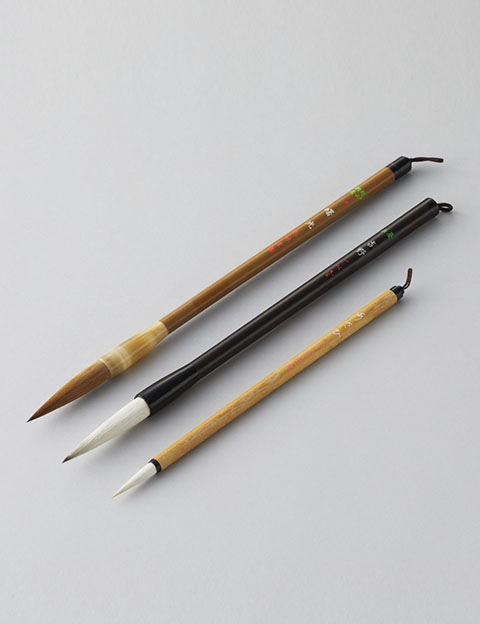NARA Fude (Brushes)

During his visit to China some 1,200 years ago, the monk Kukai learned how to make brushes. Upon returning to Japan, he passed on his knowledge to the people living in what is now Nara Prefecture. This marked the beginning of brush-making in the area.
Brushes became more widely used following the establishment of school education at the beginning of the Meiji era (1868-1912), and the demand for high-quality brushes has remained constant ever since.
Nara brushes are made using the hair of ten animals, including sheep, horses, deer, tanuki, weasels, martens, rabbits and squirrels.
Feature
The raw material for these brushes comes from the hair of various animals, including sheep, horses, deer, tanuki, weasels, martens, rabbits and squirrels. The brushes are made by skillfully combining hair qualities such as elasticity, strength and length.
How to make
Depending on the type of brush, various animal hairs are sorted, rubbed in ash and bundled together. The bundle is then immersed in water, shaped and mixed together, the core is formed and the top hair is coiled. Once dried, the base is tied with hemp thread to complete the neck. After it is placed into the shaft and fixed with adhesive, the brush is completed by engraving an inscription on the handle.

